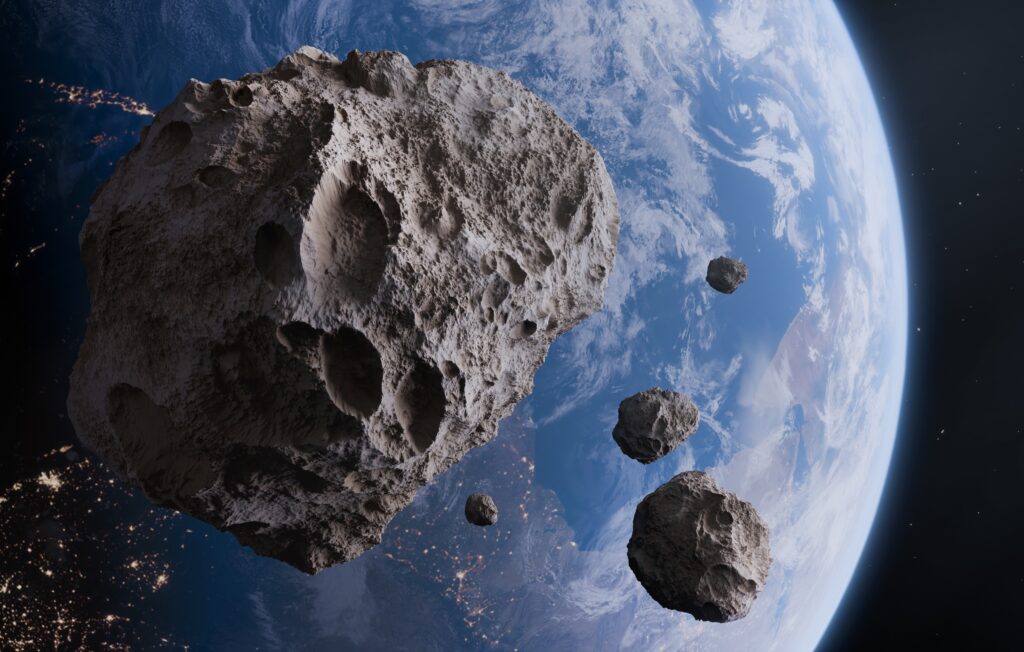NASA’s OSIRIS-REx mission has returned a groundbreaking collection of samples from the asteroid Bennu, revealing chemical compounds that may hold the key to understanding how life began on Earth. Scientists have found life-essential materials like amino acids and nucleobases, hinting that asteroids like Bennu may have played a crucial role in seeding our planet with the building blocks for life.
The samples have sparked excitement in the scientific community, with experts such as Prof. Sara Russell, a cosmic mineralogist at the Natural History Museum in London, calling the findings “jaw-dropping.” Researchers believe that these compounds, never seen before in meteorites, might have helped jumpstart life more than 3.7 billion years ago.
The Key Ingredients Found in Bennu’s Dust
In September 2023, NASA’s OSIRIS-REx spacecraft successfully returned 120 grams of Bennu’s dust to Earth. A small portion of this sample, about 200 milligrams, was sent to the UK for further analysis. What scientists found inside this black, grainy material stunned them: a variety of compounds essential for life, some of which had never been observed in meteorites before.
The Bennu dust contained white phosphorus compounds, which are crucial for life. These compounds, found in both the Earth’s oceans and the human body, had never been seen in meteorites. Along with these, researchers discovered phosphates, ammonia, and a wide array of amino acids—organic molecules that form the building blocks of proteins. Most significantly, the sample also contained the five nucleobases needed to form RNA and DNA, the molecules that carry genetic information in all living organisms.
These findings strongly suggest that Bennu may not have supported life itself, but instead carried important materials that helped spark life on Earth. Scientists now believe that Bennu and other asteroids could have delivered these life-essential compounds to the early Earth, leading to the formation of life millions of years ago.
What Does This Mean for the Origins of Life on Earth?
Bennu’s parent body, the larger asteroid or planetesimal from which it broke off, likely had underground briny lakes. As these lakes evaporated, they left behind salt deposits similar to those found in Earth’s dry lake beds. This indicates that Bennu’s material could have been exposed to liquid water in the past—an essential ingredient for life.
These findings also support the theory that life on Earth may have had a cosmic origin. Asteroids and comets, containing organic molecules and minerals, could have impacted Earth in the planet’s early days. The compounds they carried could have provided the necessary ingredients for life to begin, sparking the first chemical reactions that eventually led to the formation of complex organisms.
Scientists are continuing to study Bennu’s samples to understand how these compounds could have contributed to life’s emergence. One of the key goals of this research is to determine whether life on Earth could have originated from material delivered by asteroids like Bennu, or whether the planet had the ability to form life on its own.
Searching for Life Beyond Earth
The discovery of life-related compounds on Bennu adds to a growing body of evidence suggesting that life might exist beyond Earth. Researchers are now turning their attention to moons like Europa and Ganymede, which may host subsurface oceans beneath their icy surfaces. These moons could provide the right conditions for life to thrive, even in the harsh environment of space.
In addition to Bennu’s samples, scientists are also excited about the upcoming missions to Mars. The Rosalind Franklin rover, built in the UK, is set to land on Mars in 2029. The rover will drill beneath the Martian surface in search of ancient microbial life. The results from these missions could help answer one of humanity’s biggest questions: Are we alone in the universe?
The James Webb Space Telescope and the Search for Alien Life
While scientists have not yet found definitive proof of life beyond Earth, recent discoveries have fueled optimism. In September 2023, the James Webb Space Telescope detected two life-linked chemicals—dimethyl sulfide (DMS) and dimethyl disulfide (DMDS)—on the exoplanet K2-18b. While these findings are not conclusive evidence of extraterrestrial life, they suggest that conditions on distant planets might be conducive to life.
As astronomers continue to study distant exoplanets, they hope to find more signs of life, or at least conditions that could support it. These discoveries, along with the findings from Bennu, are part of a larger effort to understand the nature of life in the universe.
Space: Could Life Exist Beyond Earth?
To explore these exciting discoveries, the Natural History Museum in London will soon open a new exhibition, Space: Could Life Exist Beyond Earth? The exhibition will highlight the findings from Bennu and showcase ongoing missions to search for life on other planets and moons. Visitors will also learn about the Mars-bound Rosalind Franklin rover and its mission to find signs of ancient life.
The exhibition will feature meteorites from Mars, the Moon, and asteroids—some even older than Earth itself. It will also present the latest research on the possibility of life in the universe. Museum exhibition manager Sinead Marron poses a thought-provoking question for visitors: “If we find alien life, what should we do? Should we interact with it, avoid it, or even consume it, as we do life on Earth?”
The Big Questions Ahead
These discoveries don’t just deepen our understanding of how life began—they also raise profound questions about how we should treat other forms of life, whether on Earth or elsewhere in the universe. The prospect of finding alien organisms challenges us to rethink our relationship with life on Earth. Should we approach extraterrestrial life with the same respect we show life on our planet? Or should we take a different approach?
As humanity continues to explore the stars and search for life beyond Earth, these questions will shape how we understand our place in the universe.


